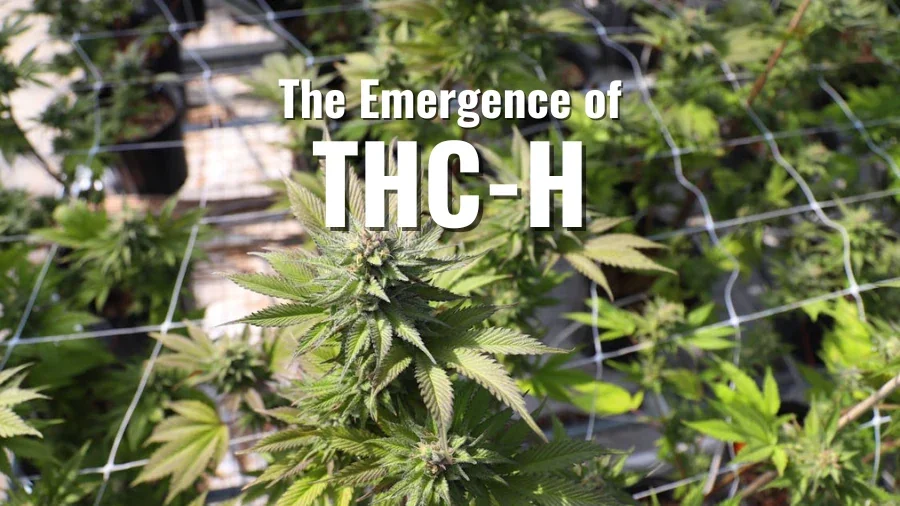The year 2020 proved to be a significant period of scientific advancement and discovery in the cannabis circles. A standout achievement during this time was the publication of an article on December 16th, 2020, where researchers made notable strides in unraveling the complexities of cannabis and its diverse array of phytocannabinoids. Through meticulous laboratory techniques, they isolated and synthesized many cannabinoids, CBD-H and THC-H among them, shedding light on their chemical composition and potential therapeutic effects.
Scientists successfully created pure standards of THC-H and CBD-H compounds through stereoselective synthesis, ensuring accuracy and consistency in their research attempts. This achievement provided a solid foundation for further exploration. In addition to CBD-H and THC-H, researchers also focused on other cannabinoids such as CBD-B, CBD-P, THC-B, and THC-P, isolating them directly from the cannabis plant and synthesizing them in the lab.
Against this backdrop of innovation and inquiry, the unveiling of nearly 150 phytocannabinoids in the most recent inventory stands as a testament to the depth and breadth of our exploration into the cannabis plant. Each entry in this exhaustive compendium represents a unique chemical compound, a molecular masterpiece waiting to be deciphered and understood.
With its distinct chemical composition, one compound stands out for its remarkable uniqueness: THC-H, capturing the attention of researchers and enthusiasts alike. By shedding light on this intriguing cannabinoid, we aim to empower you with knowledge and insights that can improve your overall experience with THC-H.
Blog Summary:
THC-H may be one of the newest cannabinoids to enter the spotlight, but it’s already making waves in the cannabis world. Today, we’ll walk you through some of these essentials:
- Where THC-H comes from and how it was discovered
- How much of it naturally occurs in cannabis
- What researchers currently know about its effects
- How it compares to other forms of THC
- The types of products you’ll find on the market

Table of Contents:
- What is THC-H?
- The Discovery of THC-H
- How Much THC-H is in Cannabis?
- Potential THC-H Effects
- Comparisons with Other THC Variants
- Exploring the Market
What is THC-H?
THC-H, short for tetrahydrocannabihexol, is a newly discovered cannabinoid that is generating significant interest and excitement in the field of cannabis research. It falls into a unique category of cannabinoids that bridge the gap between familiar compounds like CBD and THC, but with a twist: THC-H boasts a n-hexyl side chain on its molecular structure, setting it apart from its counterparts.
Researchers stumbled upon THC-H during their quest to uncover the hidden secrets of cannabis chemistry. Unlike its better-known cousins, THC-H’s existence was previously unknown, making its discovery all the more exciting. While much is still unknown about this cannabinoid, early research suggests it may hold promise for various applications.
But THC-H is just one piece of the puzzle. Alongside its discovery came a deeper understanding of other cannabinoids, like cannabidihexol (CBD-H), which share similar chemical structures and potential benefits.
The Discovery of THC-H
Stemming from the pioneering work of Italian researchers in the field of cannabinoid science, THC-H emerged from a rigorous process of isolation, synthesis, and characterization. Scientists were set to identify and understand a set of cannabinoids, tracing their origins back to the cannabis plant itself. Through a combination of laboratory techniques and innovative methodologies, researchers succeeded in isolating THC-H from cannabis samples and synthesizing it in pure form.
They started by making a specific chemical that served as a precursor in the synthesis of cannabinoids. Then, they used a series of reactions, including a Wittig reaction and hydrogenation, to transform it into trans-CBD-H and trans-Delta9-THC-H. The process involved careful monitoring to stop at the right time to obtain the desired compounds.
Comparing certain characteristics like retention time, molecular ion, and fragmentation spectra of pure synthesized standards, they concluded that one peak in the chemical could be CBD-H, another one CBD-M, and a third one possibly Delta9-THC-H. However, they couldn’t be completely sure at first due to low abundance and interference from other substances.
By analyzing the fragments produced when the sample was ionized, they could tell the difference between CBD-H and THC-H. They confirmed the identification of CBD-H by isolating pure fractions containing its acidic precursor and then heating them to remove carbon dioxide. They couldn’t isolate fractions containing THCHA, but they used the synthesis of THC-H to help identify a similar compound in the sample.
How Much THC-H is in Cannabis?
Given the meticulous analysis done on the cannabis sample by the Italian team, they estimated that THC-H is present in relatively low concentrations compared to other main cannabinoids like CBD and Delta 9 THC.
The concentrations of THC-H and CBD-H were found to be in the order of micrograms per gram. For every gram of the cannabis sample used, there are approximately 7 micrograms of THC-H. Similarly, CBD-H was also detected in this variety, but in slightly higher concentrations, around 27 micrograms per gram.
These findings highlight the relatively low abundance of THC-H in comparison to other cannabinoids, which are typically present in the order of milligrams per gram. In the same sample, CBD was found in a concentration of 500 micrograms per gram and Delta 9 THC in 400 micrograms per gram. While THC-H may not be as abundant as some of its counterparts, its presence adds to the complex chemical profile of cannabis and underscores the importance of further research into its potential effects and applications.

Potential THC-H Effects
The consumption of THC-H shows significant promise for a range of potential benefits, primarily due to its interactions with the body’s endocannabinoid system because of its chemical composition. However, it’s important to note that it’s still early days in understanding the full scope of THC-H’s effects, largely due to a lack of comprehensive studies resulting from its relatively short lifespan.
It is worth mentioning that CBD-H was isolated, and its pharmacological activity has been evaluated in mice, as it was mentioned in the 2020 article. At extremely low doses (1 mg per kg), CBD-H showed an interesting nocifensive activity in a formalin-induced pain test. Yet, the concentration of CBD-H found in the sample is too low to exert a pharmacological effect. There might be other cannabis varieties that contain higher concentrations of CBD-H, but further research is needed to confirm this.
Of course, the experiment involving CBD-H administration in mice does not necessarily indicate the effects THC-H may have in humans. This is due to differences not only in the chemical composition of the two cannabinoids but also in the physiological responses between animal models and human biology. Therefore, while these preliminary findings are intriguing, they do not provide conclusive evidence of THC-H’s effects.
Comparisons with Other THC Variants
In comparing THC-H with other THC variants, such as Delta 9 THC, it is essential to consider their chemical properties. While both THC and THC-H belong to the same class of cannabinoids and share certain structural similarities, they also exhibit distinct differences that set them apart.
Delta 9 THC is well-known for its euphoric effects and psychoactive properties. When consumed, it binds to cannabinoid receptors in the brain and body, producing a range of effects that may include feelings of relaxation, altered perception, and increased appetite. In contrast, THC-H possesses a unique molecular structure that distinguishes it from traditional THC. While THC-H may also interact with cannabinoid receptors in the body and brain, its effects and potency may differ due to subtle variations in its chemical composition.
When exploring the landscape of cannabinoids, it’s important to differentiate between various compounds with similar names and structures. For instance, it’s easy to confuse CBD-H with CBD-M (cannabidiol monomethyl ether), as well as THC-H with THC-M (tetrahydrocannabinol monomethyl ether). This distinction becomes particularly important given the potential implications for research and medical applications. The ability to accurately identify and classify cannabinoids ensures that researchers can precisely study their effects and potential benefits.
Exploring the Market
Even though it is found in low concentrations in cannabis, there are still plenty of ways to enjoy THC-H, especially when combined with other cannabinoids. Some popular methods include vaping, indulging in THC-H-infused gummies, and savoring THC-H chocolate.
When it comes to vaping THC-H, there’s an exciting array of options to choose from. Products like the Lights Out Collection from Extrax contain a dynamic combination of THC-H, Delta-8 THC Live Resin, and THC-JD. This method is favored by many due to its fast onset of effects and the ability to control dosage more precisely. Plus, with a wide range of vape pens and cartridges available, users can easily find more options.
Tasty treats like gummies offer a discreet and convenient way to consume THC-H, as they can be easily taken on the go. THC-H gummies typically come in a variety of flavors and potent dosages, making them a popular choice. But because of the high potency, it’s important to start with a low dosage, especially for those new to cannabis taking Beast Mode Blend Gummies.
For those with a sweet tooth, THC-H-infused chocolate provides a really enjoyable way to consume cannabinoids. By infusing chocolate with THC-H and THC-JD live risen, you will be able to unwind in front of your favorite TV series or embrace pure ecstasy in the comfort of your surroundings.
At D8Austin, we are committed to advancing the science and understanding of cannabinoids like THC-H through research, education, and advocacy. Our team of experts works tirelessly to develop high-quality products that meet your needs, ensuring safety, efficacy, and consistency. Join us in exploring the potential of THC-H today!





